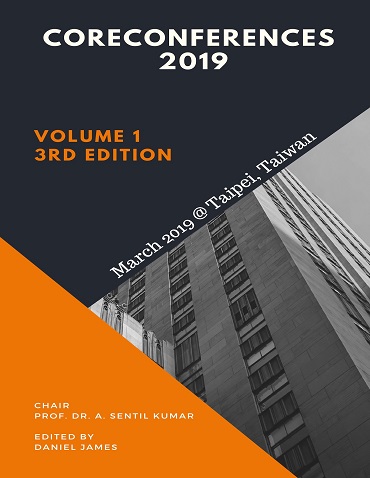- Publication Meta:Value
- Short Title:CC Batch A 2019
- Publisher:ASDF, India
- ISBN 13:978-93-88122-06-1
- ISBN 10:93-88122-06-2
- Language:English
- Type:Hard Bound - Printed Book
- Copyrights:CC Batch A Organizers/DCRC, London, UK
- Editor-in-Chief:Dr A Senthilkumar
- Conference Dates:20 - 21, March 2019
- Venue Country:Taipei, Taiwan
- Submitted Papers:227
- Acceptance Rate:8.51%
- Website:www.coreconferences.com
Welcome to ASDF Electronic Digital Library!
CoreConferences 2019
CoreConferences 2019
International Conference on Language Teaching and Religious Studies 2019
Paper 018
Awwal–;Awwal Tampat Budjang Journey Back to Pre–Islamic Epoch: A Cultural Semiotic
Helen G Juaini1
Abstract
Cultural background plays a significant role in the sphere of semiotics. Semiotics as a discipline is recognized as a useful tool in gauging cultural background and identifying signs that might represent the message of a certain work. Given the rich cultural context of Tawi–Tawi oral literature this can be used in studying semiotics. Semiotic tools were employed to interpret the awwal–awwal as provided by the respondents and to formulate a subsequent understanding of this oral literature in relation to the Sama's claim of sacredness of Tampat Budjang.
Keywords
Author's Profile
Author profile can be generated and linked through our partners World Book of Researchers. To include your profile online Click Here. After it is approved, please email to edlib @ asdf.res.in to create a link with all the papers.
e-AID
CoreConferences.2019.018
Cite this Article as Follows
Helen G Juaini. Awwal–;Awwal Tampat Budjang Journey Back to Pre–Islamic Epoch: A Cultural Semiotic. International Conference on Language Teaching and Religious Studies (2019): 10. Print.
© 2010 - by EDLIB .
All Rights Reserved.

